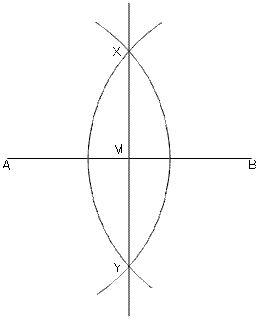
 Angle Bisectors-Cuts an angle in half
Angle Bisectors-Cuts an angle in halfSmall circles are used to show angles are equal.
There are 3 methods to make an angle bisector.
Method 1-use a compass
1-Sharp point on the vertex
2-make an arc that intersects both rays of the angle ,label those intersections
3-from the two new intersections make two more arcs
4-with a ruler draw a line from the arc intersection to the vertex
5-that line in your angle bisector
IF you followed the instructions you should have the picture on the top right.
Method 2-use a protractor
1-measure the angle measurement by 2
2-divide the angle measurement by 2
3-mark the halfway point using the protractor
4-use a ruler to connect the halfway point to the vertex
5-that is your angle bisector
Method 3-Paper Folding
1-fold one ray directly onto the other ray
2-the crease is the angle bisector
--------------------------------------------------------------
Acute angle is less that 90°
Obtuse angle is more than 90° but less that 180°
 30/20= $1.50
30/20= $1.50





























